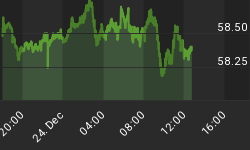The good news is:
• The number of new lows on the NASDAQ remains insignificant.
Last week provided additional evidence of the problems with NYSE breadth data. On Wednesday the NYSE had 202 52 week new lows while the NASDAQ had only 24. Ten years ago 202 new lows would have implied that we were in or near the end of a serious correction. On March 24, the bottom of the recent pull back there were only 23 new lows reported on the NYSE and 21 on the NASDAQ. The problem is caused by the high percentage of fixed income related issues currently traded on the NYSE. This problem raises questions about all NYSE breadth based models.
Between April of 1915 and April of 2002 Dow Jones maintained a bond index. A cursory look at that 87 year period indicates:
-
When bonds move up (interest rates move down) equities move up.
-
When bonds move down (interest rates move up) equities can go either way.
-
Bonds and equities have rarely been out of synch for more than 2-3 months.
There are two periods when bonds and equities remained out of synch for an extended period. The following charts show the Dow Jones Industrial Average and the Dow Jones 20 bond average over a 4 year period. The first covers July 1927 to November 1930. Bonds peaked in early 1928 and fell until the market crashed in October 1929. Both bonds and stocks rose for about 4 months then stocks resumed their decline while bonds rose further. In late 1930 stocks and bonds got back into synch and fell together until July 1931.

In the chart below I added the S&P 500 (SPX) (in green) because its trends are easier to see than the DJIA. The chart begins in April 1998. Bonds rose and stocks fell until October1998 then both reversed direction until March of 2000 when stocks topped and bonds bottomed. They remained out of synch until early 2003.

The demise of bonds has been widely predicted for quite a while. With the economy strong and commodity prices raising sharply the upside for bonds would seem limited and NYSE breadth data is likely to have a negative bias whether or not equities are strong.
I have displayed the following chart showing the percentage of junk bond funds in the FastTrack database that are above their 50 day EMA several times. This indicator has pinpointed weak spots in the equity market well for the past year. Last weekend it appeared to be recovering, last week it turned down again.

The chart below shows the Russell 2000 (R2K) along with an indicator that is constructed by subtracting momentum of downside volume from momentum of upside volume of the component issues of the R2K. The chart shows the past 6 months. The indicator hit a 6 month high on April 5 and is now near a 6 month low suggesting the next move should be up.

Volume is usually weak around holidays and during the summer. These variations add to the difficulty of reading volume indicators. In general increasing volume is good. The chart below shows a momentum indicator applied to total volume of the component issues in the R2K. Volume has been rising since the late March bottom.

The weakness of the past two weeks should be nearly over. The day after April witching (Monday) is usually weak, seasonally the rest of the week has a slight upward bias.
I expect the major indices will be higher on Friday April 23 than they were on Friday April 16.
The magnitude of the weakness in the small caps surprised me last week. The DJIA was the only major index that was up last week.
















